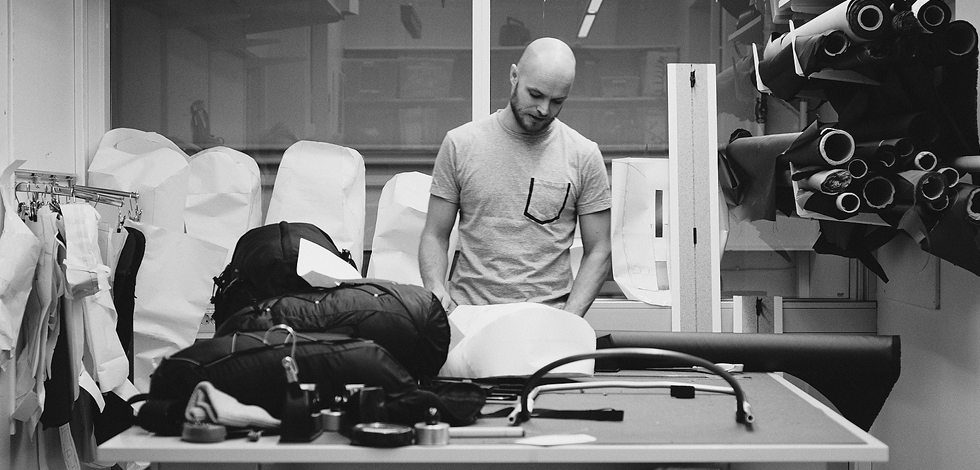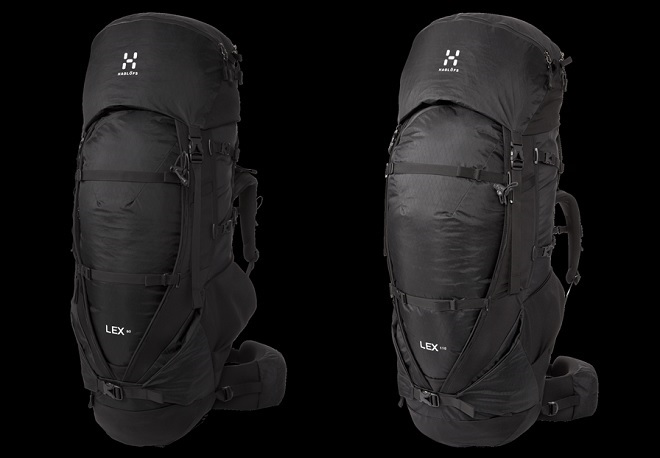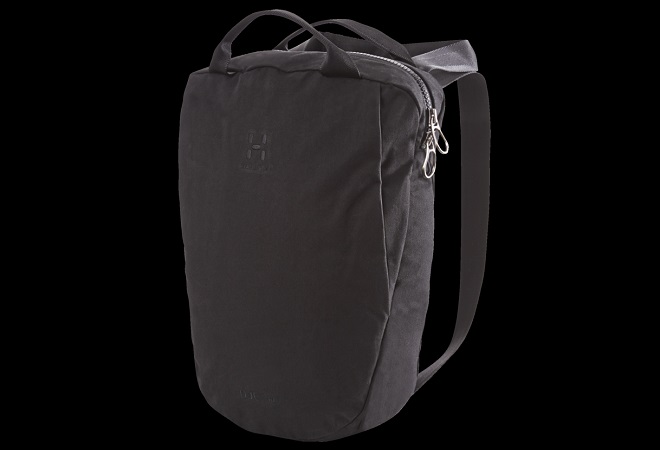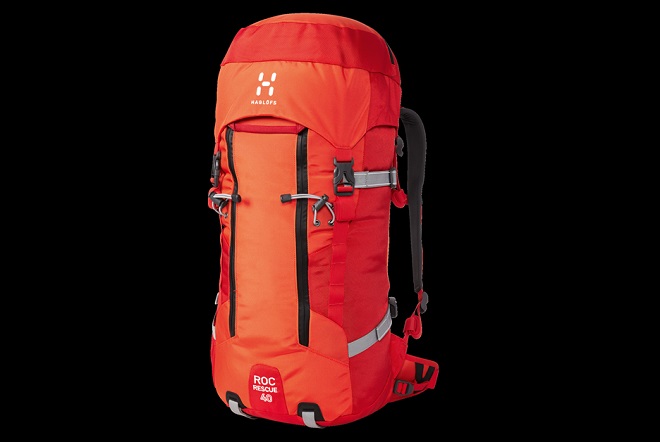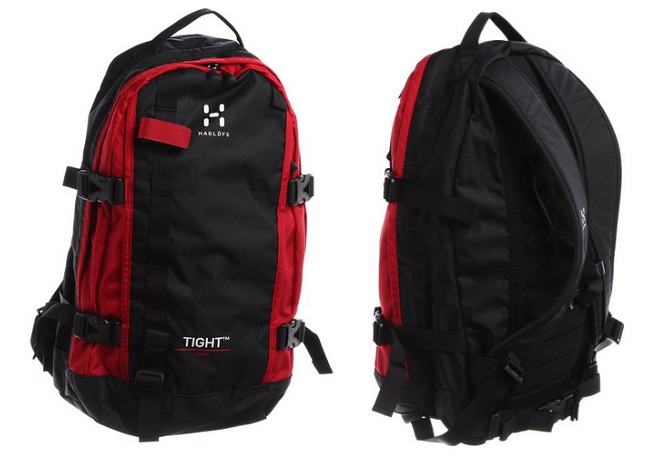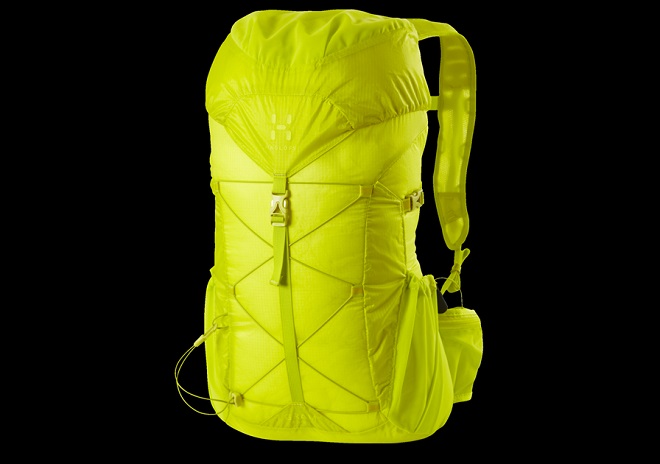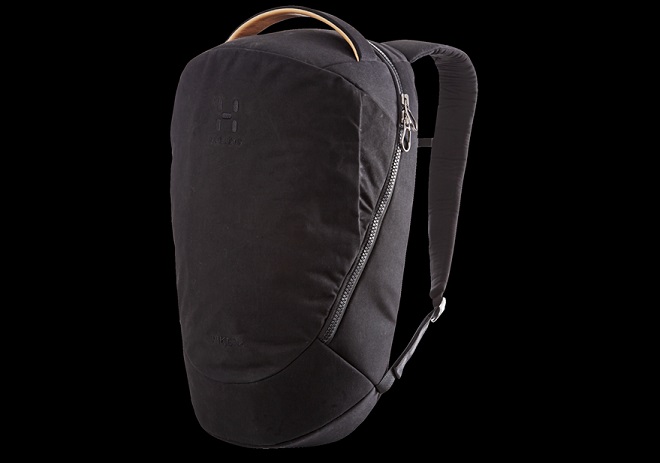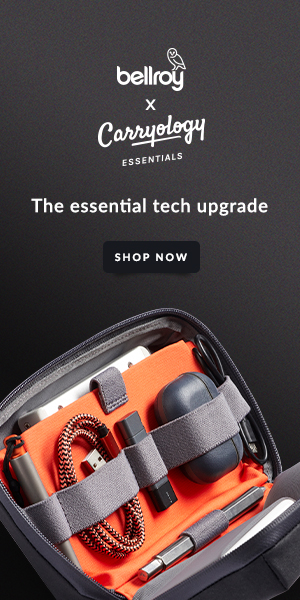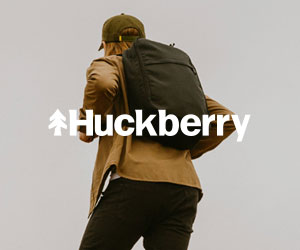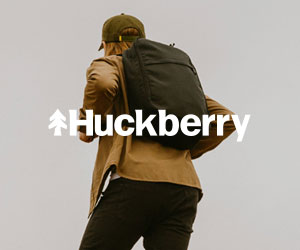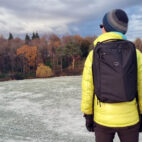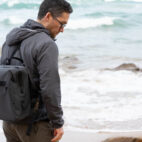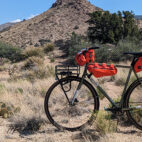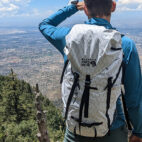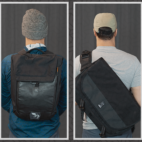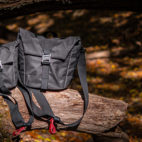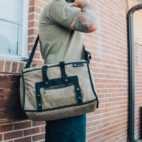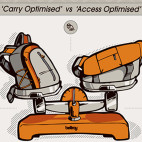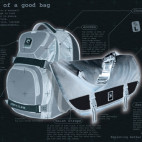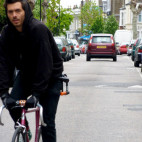Design Heads :: Henrik Björkman (Haglöfs)
A brand that can boast a hundred years of history is doing something right. Haglöfs is just such a brand. The first Haglöfs backpacks were made in 1914 and today this Swedish brand is one of the most recognised names in the outdoor industry. Eager to get an insider’s perspective, we reached out to Haglöfs designer Henrik Björkman and back and forthed about design inspiration, product testing and the new 19FOURTEEN collection…
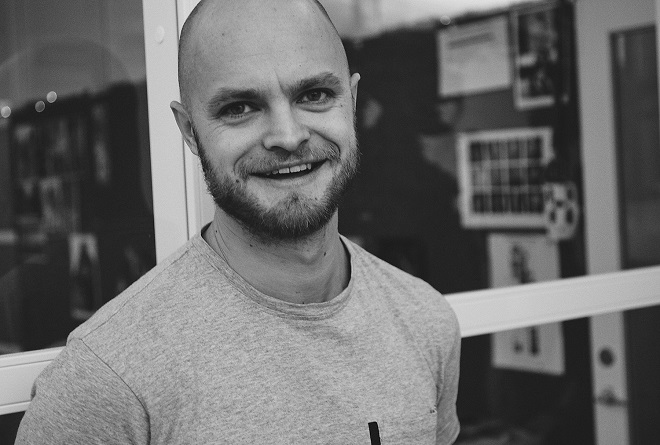
Are there any key insights that guide your stuff? What are your main channels for your creative inspiration?
Henrik: It sounds like a cliché but the activities we design our products for are probably my main source of inspiration when it comes to functions, layout of all features and fit. There is always an activity connected to a certain product and carrying out those activities lets you know if your design works or if it doesn’t. We create products for a wide range of activities, so being deep into mountainbiking, snowboarding and running certainly helps when creating packs and bags for Haglöfs.
“There is always an activity connected to a certain product.”
But a pack should not only work flawlessly and hold together during years of use and abuse; it should look good as well. I come from an industrial design background and the inspiration for silhouettes and shapes comes from all kinds of products, graphic design and apparel. Often the best inspiration is found outside the world of bags and backpacks.
One of the things I enjoy the most with designing carry solutions is that you are basically free to work with all kinds of shapes.
Are there any special traits or requirements you learn to design for Haglöfs? Anything a Haglöfs pack must be?
Henrik: Well, it needs to be fit for its purpose for one. Tested and approved by our sponsored “Haglöfs Friends”.
We are a tight design organization with a development that more or less runs parallel throughout the year. This is important for us to be able to connect the look and feel of our footwear, apparel and hardware to one unity. Our customers should be able to expect the same quality, fit, look and forward-thinking within all our product areas.
“We strive to make our products clean, tidy and easy to understand. They should have all the features they need to perform, but nothing more; pure function in an attractive manner.”
What are the pack models that you guys love the most? What is the brand most proud of?
Henrik: We are really good at trekking, we’ve been creating products for trekking from the very start in 1914. The trekking pack LEX is a very good example of where we have used constructions that have a proven track record and mixed it up with modern solutions of today. It’s a product that mixes heritage and experience with modern R&D.
We’re super curious about the new waxed polycotton lifestyle range, the 19FOURTEEN collection. Can you talk us through how that came to be?
Henrik: The 19FOURTEEN project started because we saw a gap in our product offer. We wanted to be able to equip people between activities. We wanted these products to offer the same high functionality as our other ranges but with a streetier look and a different color scheme.
It took us two years to develop the collection to what you can see in the shops as of now. It was really important for us to find the right feeling and be able to tell our customers part of our story. Haglöfs started back in 1914, and it started in Dalarna, Sweden. With this collection we wanted to remind people of our origin and do so with a contemporary, highly functional collection.
“With this collection we wanted to remind people of our origin and do so with a contemporary, highly functional collection.”
There is a distinct difference in the appearance of activity-driven outdoor products and the apparel and carry products that people use every day, back and forth to work and between activities. We spent a lot of time working on the appearance of our 19FOURTEEN collection before we actually started drawing the products. It was important for us to tie all the different product areas together in this project and give all products a binding element. One of the binding elements is within the trims package where we’ve used a lot of inspiration from Dalarna when it comes to patterns, colors and symbols. Even though this collection is a celebration of our origin, we did not want to make this a retrospective collection. We have used all our experience in our more activity-driven products and implemented these features, constructions and fits into a silhouette more suitable for the urban environment. We have chosen more matte materials with a nice hand feel that age with more beauty than polymer-based materials, and we have added leather to the mix. The interesting thing with the bags and packs in this collection is the mix between more natural materials and the contemporary lineplay and somewhat unique silhouettes. I’m really happy with the result and we’re planning on extending the range in the coming seasons. It’s been an absolute joy working with this collection and I really look forward to seeing the packs on people’s backs during this fall/winter ’14 season.
How about your journey to being a Haglöfs designer? What’s your story?
Henrik: For me, it began in 2002, when I started studying Industrial Design at Lunds Tekniska Högskola in the south of Sweden. That school, the teachers and my fellow students gave me my foundation of knowledge within the design process that I use every day. The education was really broad and I learned to apply the design process to all different kinds of products.
“I grew up far, far out in the countryside and I’ve always spent most of my spare time in the outdoors.”
I grew up far, far out in the countryside and I’ve always spent most of my spare time in the outdoors. All throughout my youth I’ve been mountainbiking and running during the summers, and riding my snowboard as often as I could during the winters. In combination with this I’ve always been interested in products and creative processes of all kinds, and to be able to combine these two interests was of course something I was aiming for as soon as I finished school. In 2011 I joined Haglöfs’ hardware team; this is where we focus on the product categories backpacks, bags and sleeping bags. It’s been an absolute joy being part of developing and strengthening Haglöfs’ hardware collection.
What areas are you really trying to strengthen for Haglöfs? Where do you want to be truly world-class? Which range or category gets the most resources and attention?
Henrik: One category we’re working hard on right now is our Mountain products. It’s an interesting category because the users are so into their gear, they are educated and know what they want and need during their activities. Another aspect is that the mountaineers/climbers really depend on their gear to perform in the harshest of conditions. This stuff needs to work. If you manage to get these athletes’ attention with our products, then you know you’ve done things right.
Now that you’re ASICS owned, do you design anything specifically for the Japanese market?
Henrik: Our strongest market is still the Scandinavian and European market, but we are strengthening our presence in Asia every day. It is no secret that all these markets differ a lot from each other. Since we create all our products for activities, we need to research how different activities are being carried out in different parts of the world. So, for sure, we need to adjust our products for different markets. Some of our products work really well in Scandinavia, others in the southern parts of Europe, and others in the Asian countries. What is really interesting is that our design expression is really appreciated in the Japanese market. Scandinavian and Japanese aesthetics are very alike. Japan has a really interesting outdoor market that inspires us for sure!
“We are strengthening our presence in Asia every day.”
Haglöfs has a long history (100 years!). Have there been defining decades or eras for the brand?
Henrik: I would say that the nineties were really defining for Haglöfs. This was the time when we started to make really technical styles. Haglöfs was really early on using GORE-TEX in apparel and footwear. In the early nineties Haglöfs launched a backpack called TIGHT®. It was groundbreaking on the Scandinavian market when it came to fit and technicality. Today we’ve reached a whole new level when it comes to backpacks but the TIGHT® backpack is still in our range and is still one of our bestsellers.
Where is your most creative space and why?
Henrik: Right now, our office, for sure. There are prototypes lying around everywhere, I have our workshop close and the woods and the sea are just outside the door.
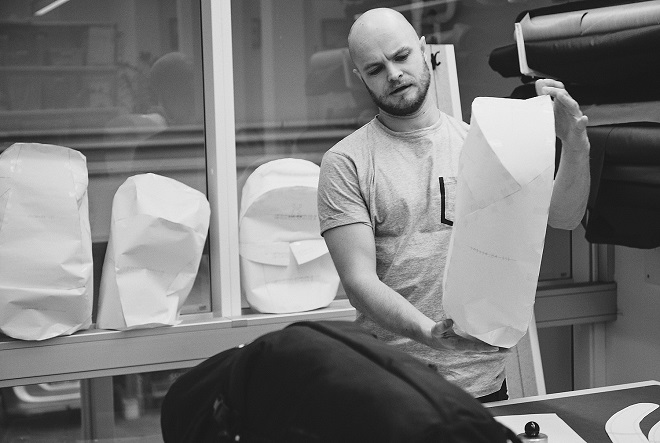
Are there any trends or things folk do in carry that drive you nuts?
Henrik: Naw, not really. I mean, trends come and go.
“People can do and like whatever they want. But one thing people need to get into their heads is that quality costs, AND it pays off at the end of the day.”
The prices of backpacks have been more or less the same for 15 years now; it’s not sustainable to keep pushing prices down, we need to realize that to be able to keep quality at a high level, prices eventually need to go up.
What are your tools of the trade?
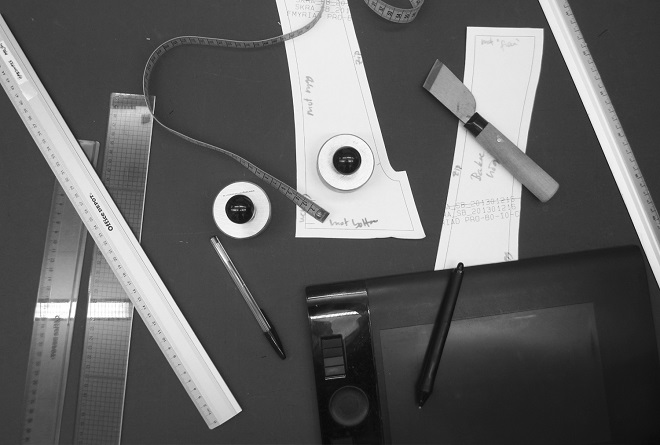
What materials do you most like to work with? Are there any new materials you’re experimenting with? Anything that will break the time-space continuum?
Henrik: The 19FOURTEEN bags and backpacks was a very untypical project for me. Usually we work with polymer materials and spend a great deal of time evaluating different materials’ durability during different kinds of activities. Every now and then, new materials turn up on the market that are really strong and lightweight. It’s always interesting when a fabric mill turns to us with a brand new development wanting us to put it into real use on an actual product. When we developed the material for the 19FOURTEEN collection it was the other way around. We approached a mill that we thought had a good foundation material and further developed it together with them. In this project, the material preferences had to become exactly how we wanted it for the constructions, especially the duffel bag construction, to work out.
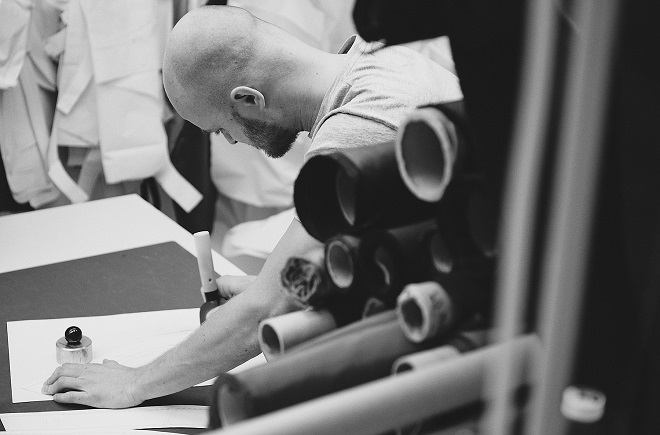
How do you test your product? What do you look for when testing?
Henrik: We are very fortunate to have very prominent athletes tied up to us through sponsorships. When it comes to our high pulse activity packs, we have the perfect test team in our HAGLÖFS SILVA multisport team. This team is one of the top five adventure racing teams in the world. We work closely together with these guys when developing and testing our new gear. We reckon that if our gear holds together for these guys and helps them win races in the Adventure Racing World Series, it should work for our more common users.
Do you have any favorite tips or habits for carrying better, either EDC or when traveling?
Henrik: Learn to carry heavy weights on your back when traveling! You never know where your travels will bring you; if you carry your stuff on your back, you will be able to go wherever you want.
You’ve been in the game for a while now, what’s the most important thing you’ve learned about design and secondly about the carry industry?
Henrik: Well, I can’t really stress enough how important it is for a designer to know exactly how stuff is produced. For you as a designer to be able to push things forward, you need to be confident in production so that you can actually change the way your products are produced. This is especially important for designers within the carry industry. Since the carry industry is not as tool-intensive, it is actually not that difficult to make changes in the production – if you know how it’s normally done, that is.
“You need to be confident in production so that you can actually change the way your products are produced.”
What carry product (of your own creation, or anyone else’s if you feel like being generous) do you enjoy the most? What makes it enjoyable?
Henrik: I like clean designs, with not too many functions/pockets, that have a great carrying comfort. There’s a lot of good solutions out there and it’s really hard to just choose one. But one thing I do enjoy is that nowadays you see a lot of small players in the carrying industry that really pull it off both in terms of design and construction!
Can we see a pocket dump?
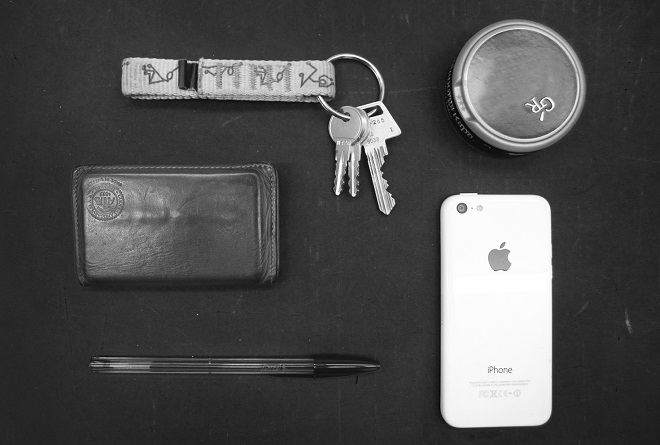
What bags do you run with daily?
Henrik: I usually use our latest prototypes to give them some wear and tear. But now I’ve kind of got stuck on the 19FOURTEEN daypack VIKE 25.
If you weren’t making carry products, what would you likely be doing for a profession? Or do you have another passion that your carry creations help you enjoy more fully?
Henrik: I’m REALLY into bikes, all kinds of bikes; downhill bikes, trail bikes and road bikes. I have way too many bikes and I try to get out and use them in the woods or on the roads around Stockholm together with friends as often as possible. It’s like the perfect combination of desirable objects, good exercise, social time, adrenaline and being outdoors!





 Carry Awards
Carry Awards Insights
Insights Liking
Liking Projects
Projects Interviews
Interviews
